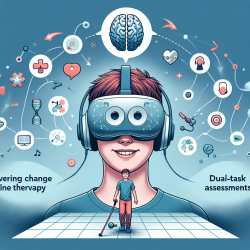Introduction
As practitioners dedicated to improving children's health and development, understanding the factors that influence their well-being is crucial. Recent research titled "Temporal trends in leisure-time sedentary behavior among adolescents aged 12-15 years from 26 countries in Asia, Africa, and the Americas" provides valuable insights into sedentary behavior trends among adolescents. This study, conducted using data from the Global School-based Student Health Survey, highlights the need for targeted interventions to address the rising sedentary lifestyle among youth.
Key Findings from the Research
The study analyzed data from 17,734 adolescents across 26 countries, revealing significant variations in leisure-time sedentary behavior (LTSB). The findings indicate:
- Increasing trends in LTSB in countries like the United Arab Emirates, Kuwait, and Thailand, where over half of the adolescents reported high LTSB.
- Decreasing trends in Lebanon, Yemen, and Tonga, suggesting effective interventions or cultural factors that mitigate sedentary behavior.
- Stable trends in other countries, yet with consistently high LTSB levels, emphasizing the need for ongoing intervention.
Implications for Practitioners
Understanding these trends is vital for practitioners, especially those involved in online therapy services like TinyEYE. Here are some strategies to consider:
- Data-Driven Interventions: Utilize data from studies to tailor interventions that specifically target high-risk groups and regions. Consider cultural and environmental factors that influence sedentary behavior.
- Promote Active Breaks: Encourage regular breaks from sedentary activities, integrating movement into daily routines. This can be especially effective in online therapy sessions.
- Engage Families: Involve family members in intervention strategies, as family support can significantly influence adolescents' lifestyle choices.
- Leverage Technology: Use technology to promote active engagement rather than passive consumption. Encourage the use of apps and devices that track and motivate physical activity.
Encouraging Further Research
While this study provides a comprehensive overview of LTSB trends, there is a need for further research to explore effective intervention strategies across different cultural contexts. Practitioners are encouraged to participate in or support research initiatives that aim to understand and address sedentary behavior in adolescents.
Conclusion
The study on temporal trends in adolescent sedentary behavior offers a critical platform for developing targeted interventions. By integrating data-driven strategies and encouraging further research, practitioners can play a pivotal role in promoting healthier lifestyles among adolescents.
To read the original research paper, please follow this link: Temporal trends in leisure-time sedentary behavior among adolescents aged 12-15 years from 26 countries in Asia, Africa, and the Americas.










